There’s a fair amount of clutter in my mother’s house, which is characteristic of my family, but not at the level of hording. For instance, no one saved all of the phone books that have come to the house over the years. But there was one tucked away in a cabinet that I came across last week.
This one.
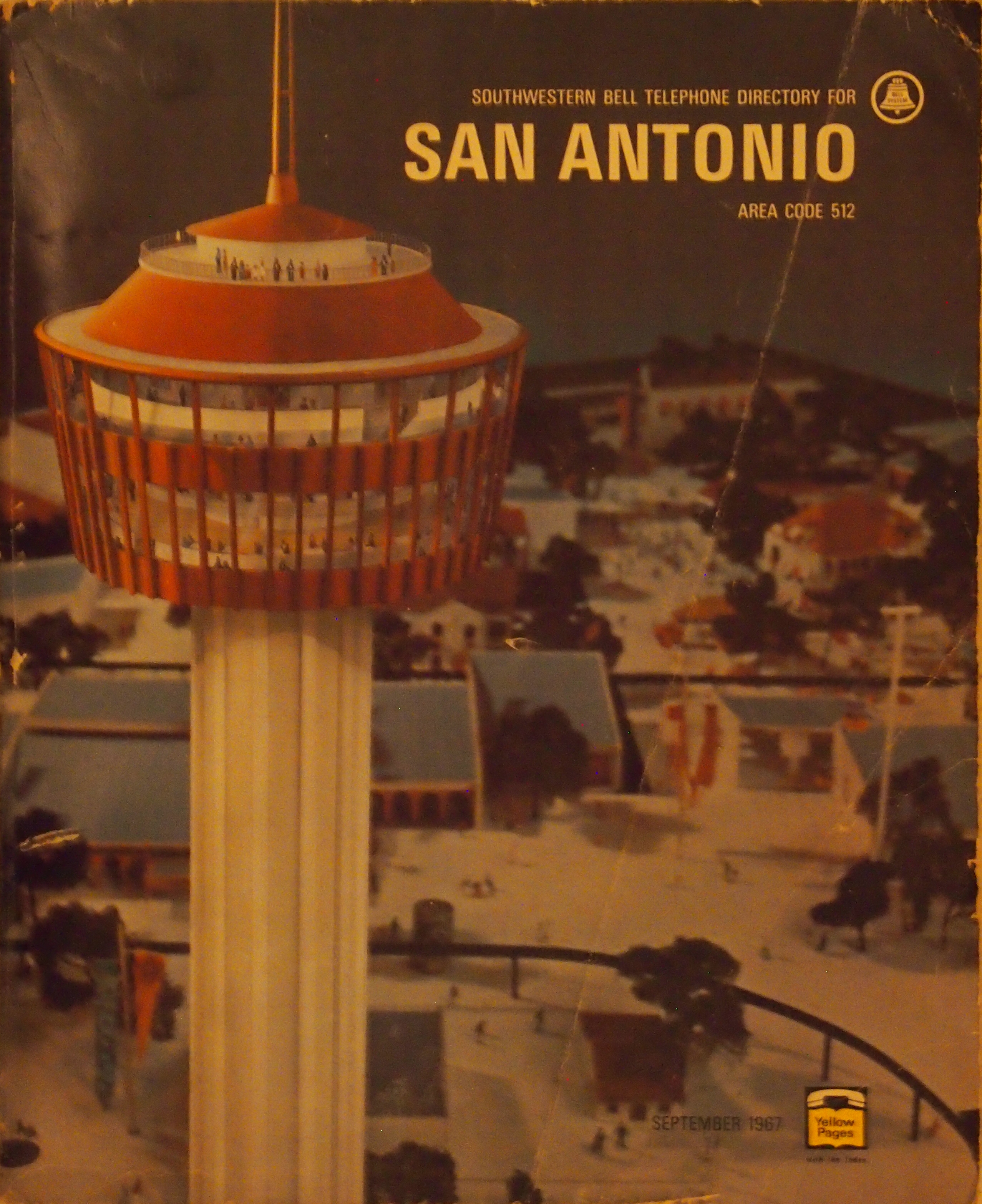 The Southwestern Bell Telephone Directory for San Antonio, published in September 1967. With a model of the Tower of the Americas prominent on the cover, rising above a model of HemisFair, which would run during in 1968. When the directory was published, the tower was still under construction.
The Southwestern Bell Telephone Directory for San Antonio, published in September 1967. With a model of the Tower of the Americas prominent on the cover, rising above a model of HemisFair, which would run during in 1968. When the directory was published, the tower was still under construction.
Why was the directory saved? Maybe as a kind of souvenir of that world’s fair. Or because it was the first phone book we got when we moved to San Antonio, which was in the summer of ’68. Since phone books used to be published annually, we would have gotten a ’67 edition.
The back cover advertises the Bell System Exhibit at the fair with a painting that looks as 1967 as can be.
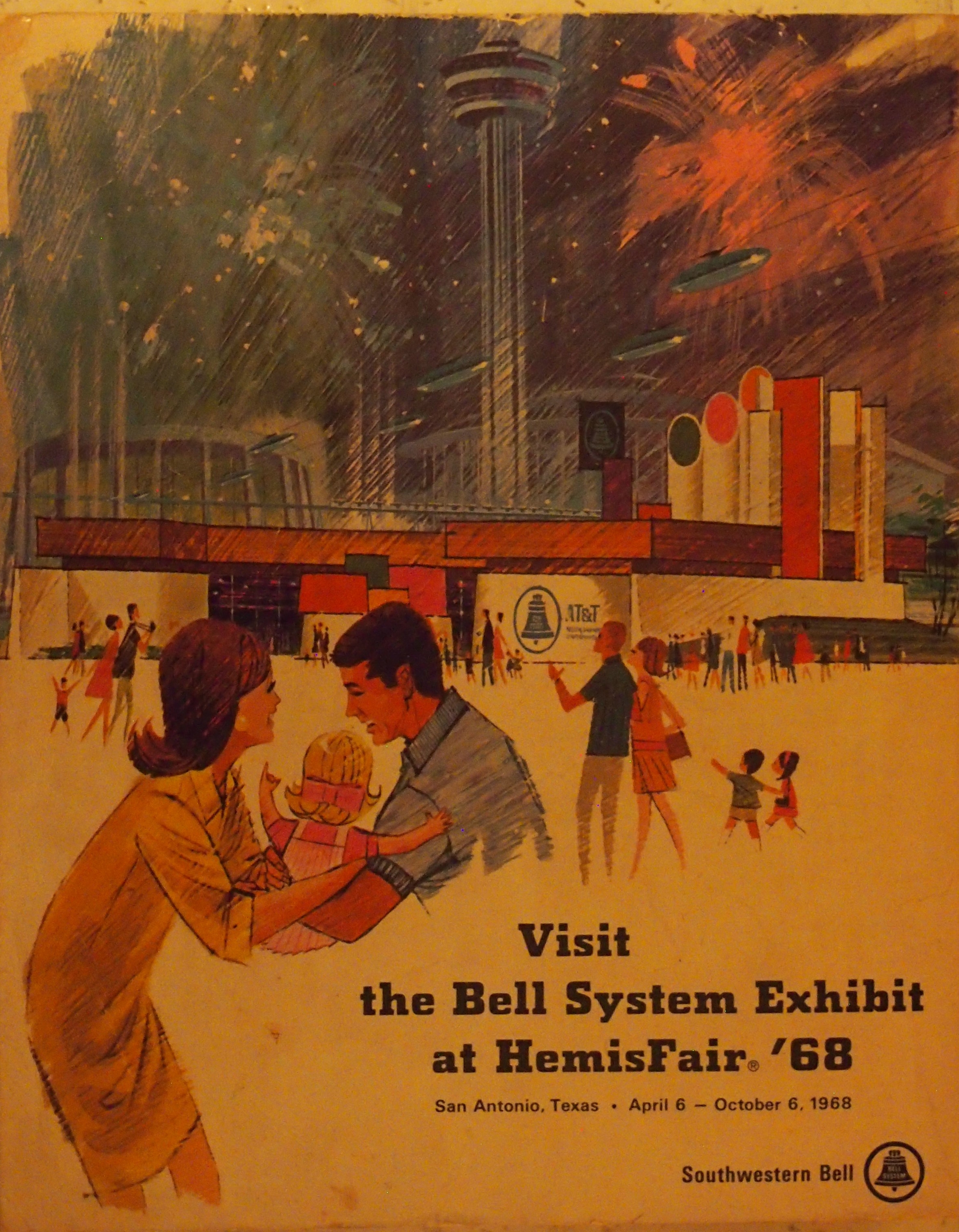 Those skyride cars are the artist’s fancy. The actual skyride cars, which I remember because they lingered at the site of the fair for years afterward, looked more like these.
Those skyride cars are the artist’s fancy. The actual skyride cars, which I remember because they lingered at the site of the fair for years afterward, looked more like these.
Naturally, I had to spend some time looking between the covers. Just turning to any random part of the white pages — people named Green, in this case — you see the following.
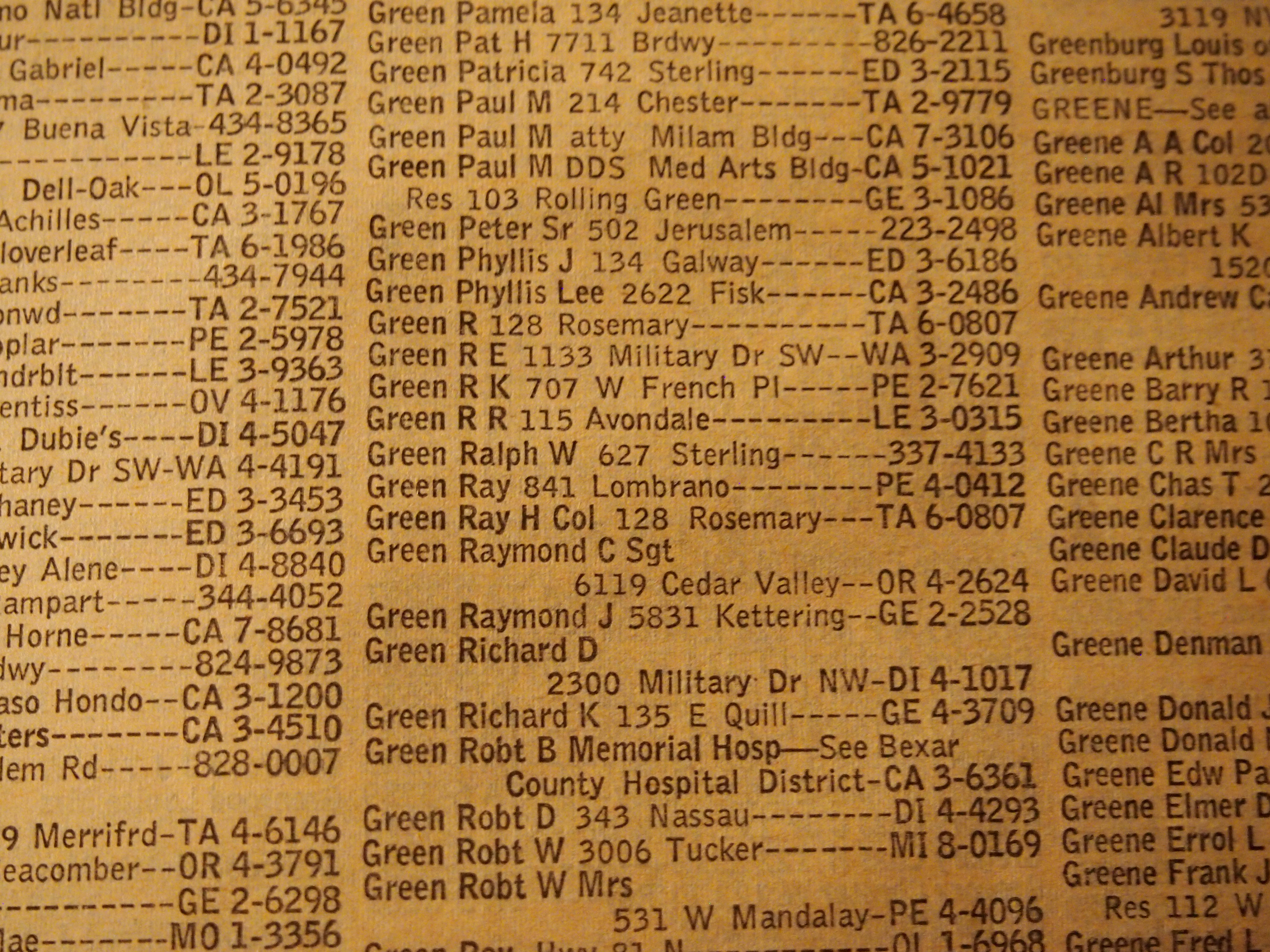 Name, address and an alphanumeric for a phone number, though a few of them are all numeric. So I’m not imagining things when I remember being taught as a seven-year-old, after we moved to San Antonio, that our new number began with TA4. At some unremembered moment in the ’70s, that became 824.
Name, address and an alphanumeric for a phone number, though a few of them are all numeric. So I’m not imagining things when I remember being taught as a seven-year-old, after we moved to San Antonio, that our new number began with TA4. At some unremembered moment in the ’70s, that became 824.
I looked up the parents of a few people I knew in high school. Interestingly, none of them yet lived in the houses I would remember them being in, which would be about 10 years later. Also, per custom of the time, only the man of the house was listed.
Something else that’s gone: this is the white page listing for all of the Handy-Andy grocery stores in San Antonio in 1967.
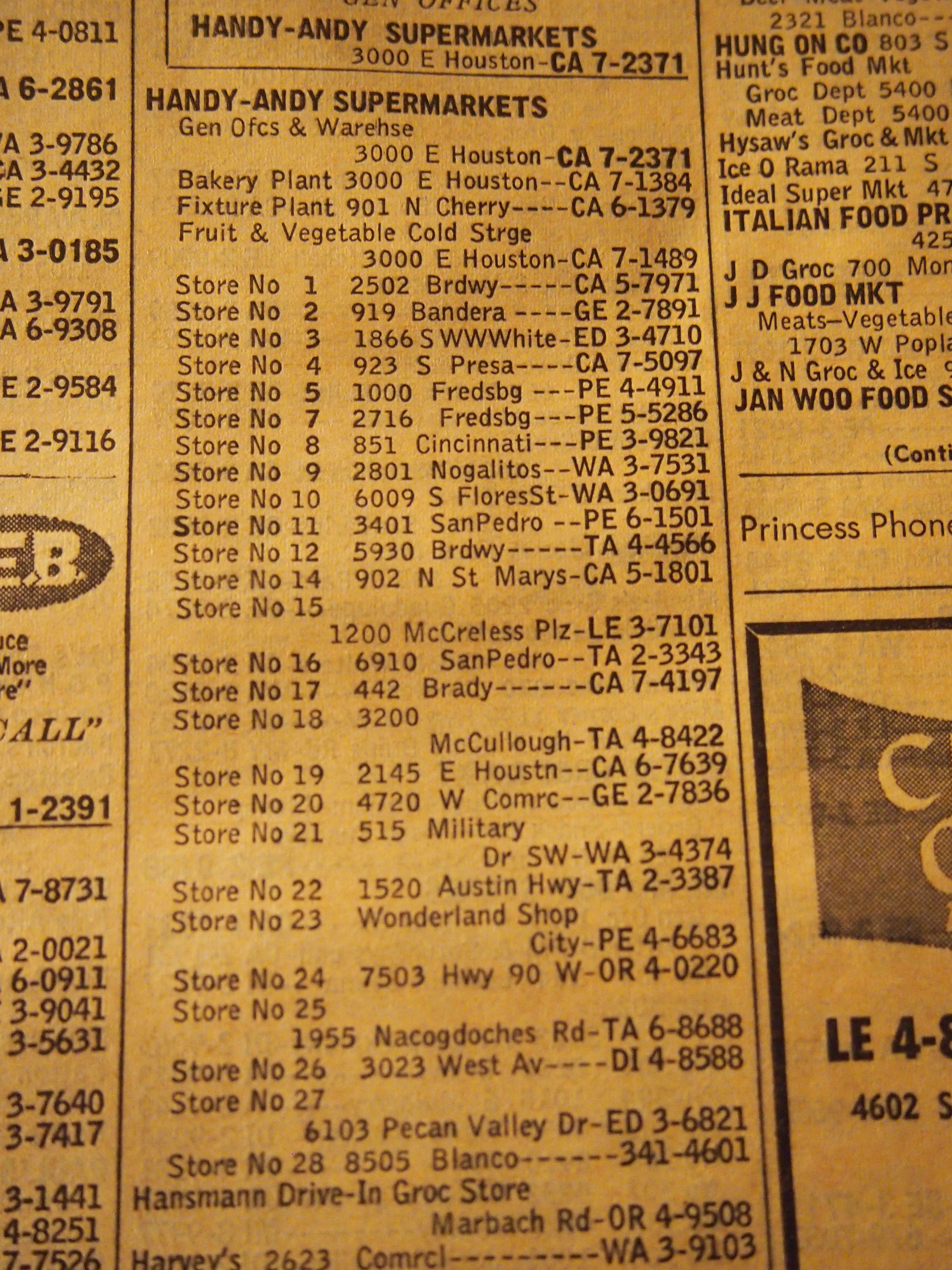 Twenty-eight all together, and there were probably more in smaller towns in South Texas. My grandmother traded — interesting old-fashioned choice of verbs — at the one on 5930 Broadway. The store gave away coffee and little doughnuts. She’d drink some coffee, I’d eat some doughnuts. After moving to town, my family frequented the one at 1955 Nacoghoches all through the ’70s and ’80s.
Twenty-eight all together, and there were probably more in smaller towns in South Texas. My grandmother traded — interesting old-fashioned choice of verbs — at the one on 5930 Broadway. The store gave away coffee and little doughnuts. She’d drink some coffee, I’d eat some doughnuts. After moving to town, my family frequented the one at 1955 Nacoghoches all through the ’70s and ’80s.
These days, there are zero Handy-Andy supermarkets. In the struggle for regional grocery dominance, HEB won. The 1955 Nacoghoches location is now an HEB, and probably some of the others are as well. This article tells about the last gasp of Handy-Andy.
On to the yellow pages. Actually, all of the pages are fairly yellow, considering that the book is now more than 50 years old. Anyway, here’s an industry that isn’t what it used to be.
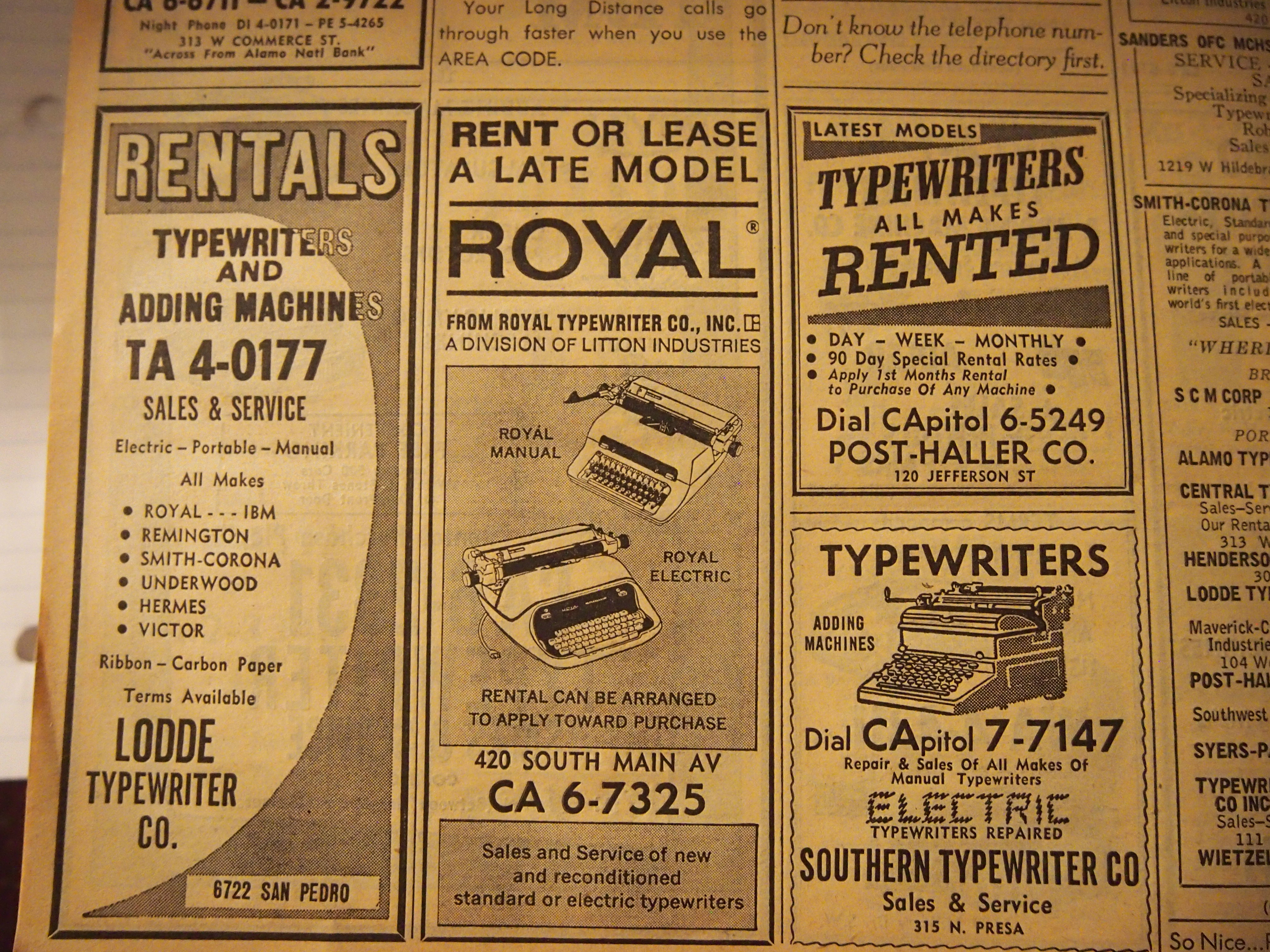 This industry is flourishing as ever. But the terminology has changed.
This industry is flourishing as ever. But the terminology has changed.
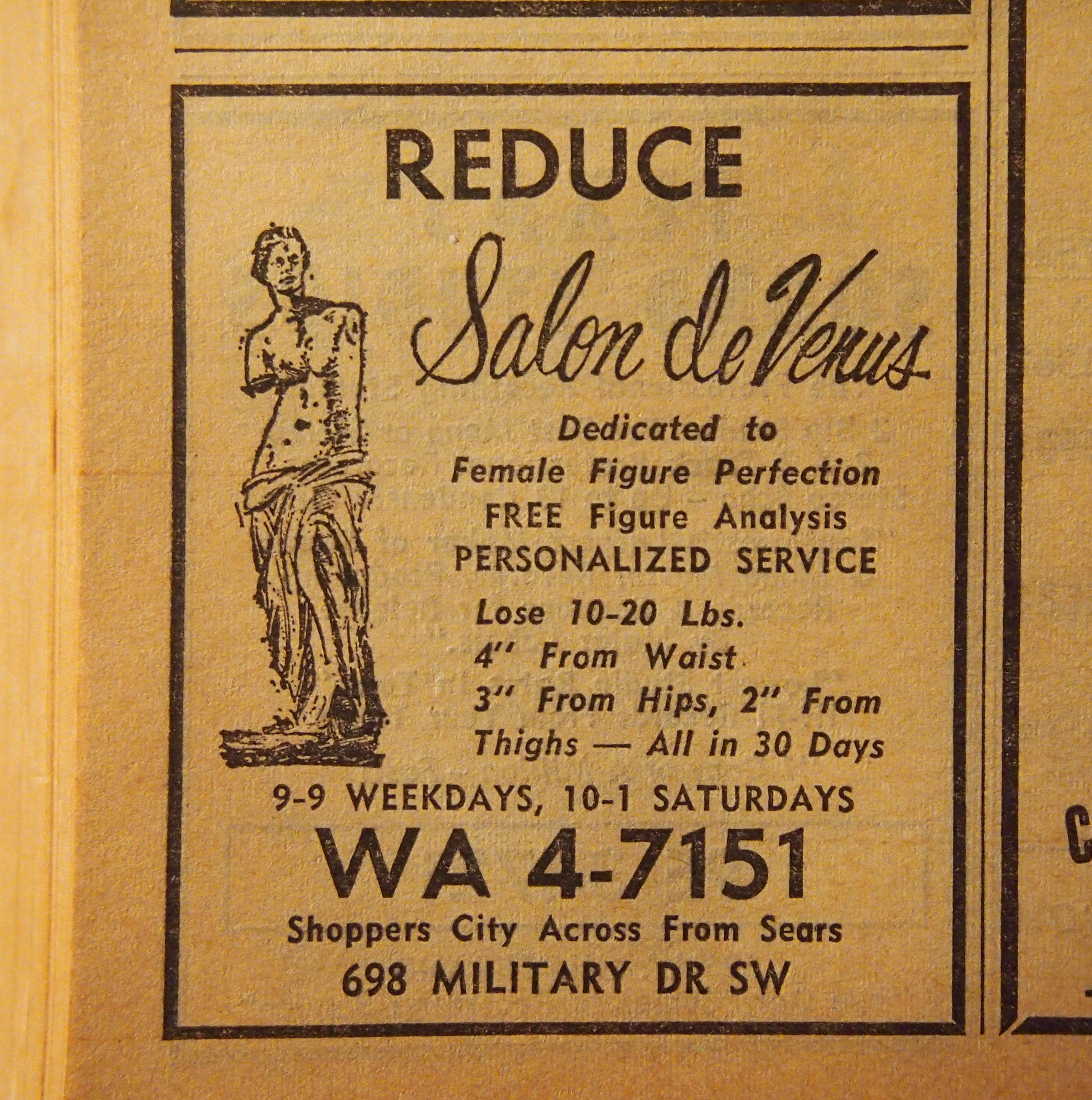 And there were house ads in the phone book. Direct dialing was a relatively new thing in 1967, I understand. Definitely cheaper than paying human operators, but DDD as a shorthand for it never caught on.
And there were house ads in the phone book. Direct dialing was a relatively new thing in 1967, I understand. Definitely cheaper than paying human operators, but DDD as a shorthand for it never caught on.
 Here’s something for those of us who remember the difference between person-to-person calls and station-to-station calls, which was relevant into the ’70s. I see that the Phone Company (always caps, always) was encouraging station-to-station.
Here’s something for those of us who remember the difference between person-to-person calls and station-to-station calls, which was relevant into the ’70s. I see that the Phone Company (always caps, always) was encouraging station-to-station.
 I can only speculate why. Person-to-person calls were more expensive, so you’d think the Phone Company would want people doing that.
I can only speculate why. Person-to-person calls were more expensive, so you’d think the Phone Company would want people doing that.
But there was a way to game the system, if you only wanted (say) your family to know that you’d arrived somewhere safety. You’d call person-to-person and ask for someone that didn’t exist, or maybe yourself. The person who answered would know it’s you, but say that person you asked for wasn’t there. In that case, there was no charge for the person-to-person call.
I don’t ever remember doing that, but I know people did (and who probably weren’t afraid of the Phone Cops). By contrast, station-to-station was guaranteed revenue for the Phone Company.